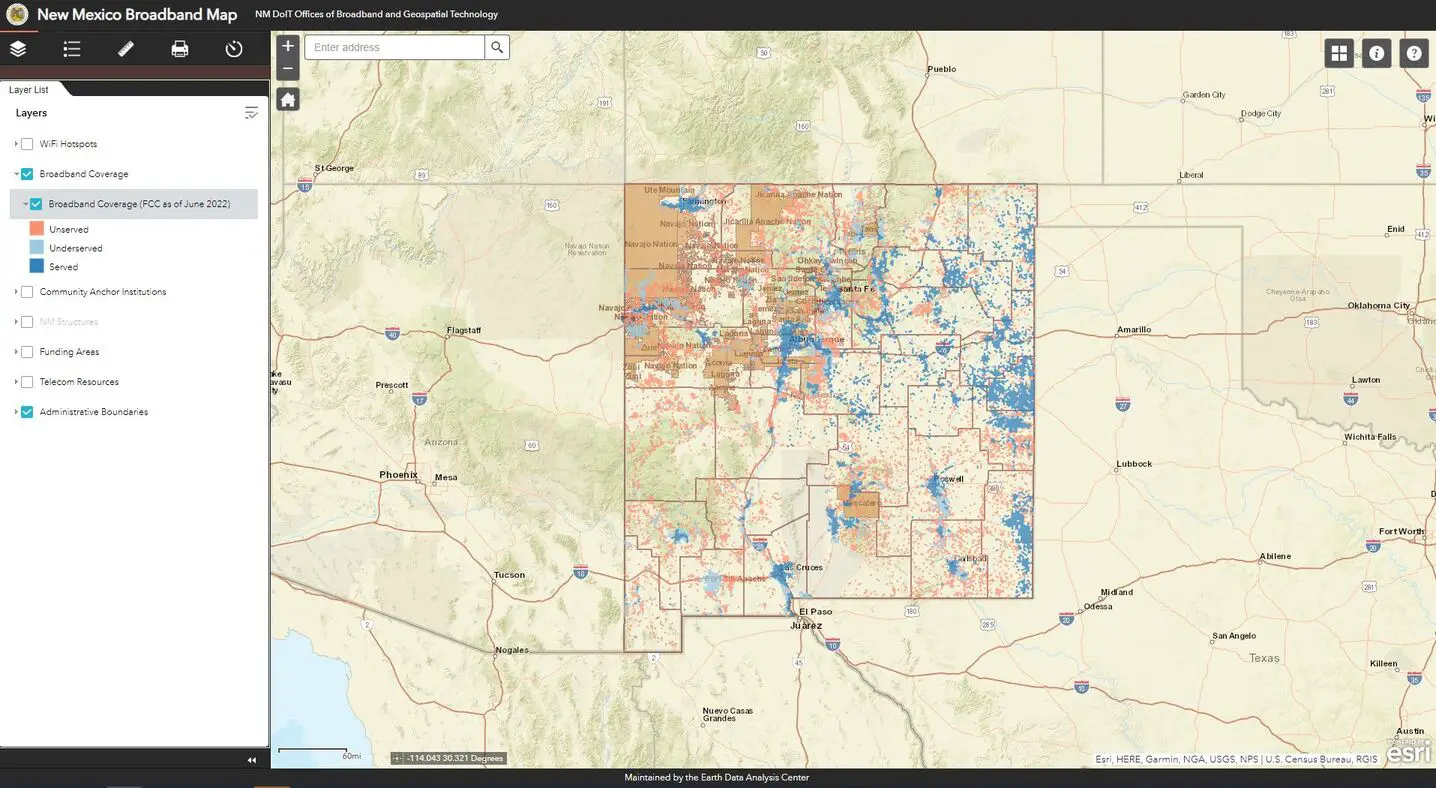The New Mexico Broadband Program (NMBB) began in 2010 as part of the National Telecommunications and Information Administration (NTIA) State Broadband Initiative (SBI), which implemented the joint purposes of the American Recovery and Reinvestment Act of 2009 and the Broadband Data Improvement Act. The SBI program facilitated the integration of broadband and information technology into state and local economies.
After that initiative was completed, EDAC continued working with the New Mexico Department of Information Technology (DoIT) on several other broadband projects, such as the Governor’s Broadband for Education Initiative, PSFA Broadband Deficiencies Correction Program (BDCP), and the NM Rural Broadband Project (RBBP). In 2022 the Office of Broadband Access and Expansion (OBAE) and the Connect New Mexico Fund (CNMF) were created. This later gave way to the Connect New Mexico Pilot Program (CNMPP), a grant program that allows awarded Internet Service Providers (ISPs) to bring broadband to unserved and underserved communities.

EDAC continues to maintain the New Mexico Broadband Map (NMBB Map), which had originally been created in partnership with DoIT for the NTIA SBI project. The NMBB Map, http://nmbbmapping.org/mapping/, is an interactive web map that displays broadband availability based on download/upload speeds: Served (100/20 Mbps or more), Underserved (from 25/3 Mbps to just under 100/20 Mbps), and Unserved (less than 25/3 Mbps). This data is derived from the Federal Communications Commission (FCC)’s Broadband Serviceable Locations (BSL) data. The NMBB Map also includes other relevant data: Community Anchor Institutions (CASA database), NM structures, funding areas, telecom resources, WiFi hotspots, and administrative boundaries for reference.
The map allows consumers to see broadband availability and policymakers to address the barriers for broadband expansion and to improve broadband adoption in underserved and unserved communities. The adoption of high-speed Internet services and information technology enhances economic development, public safety, health care, educational opportunities, and the quality of life for New Mexicans.